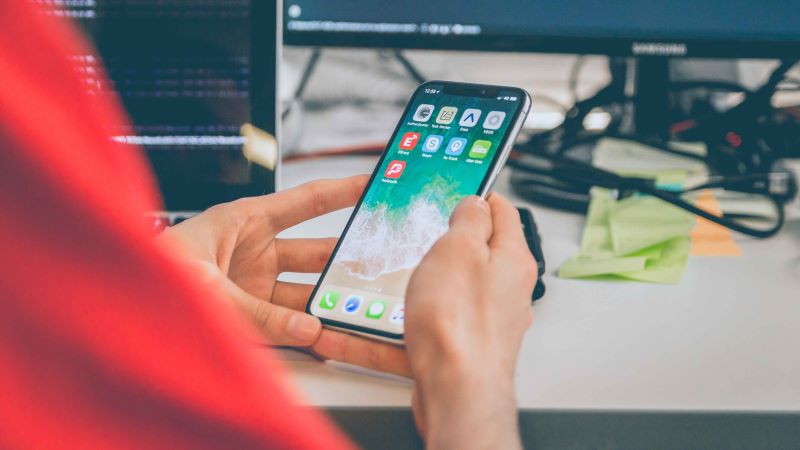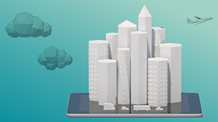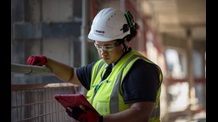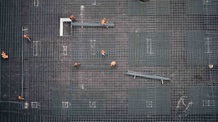Why invisible technology is the future
White walls, grey décor, rows of desks. Gone. The appearance of workplace design has undergone a dramatic transformation in recent years but beneath the face lift sits another level of opportunity – one that will transform how the workplace is operated.
It’s no secret that the future of the workplace lies in technology. That which is designed to support CRE teams to better facilitate the running of buildings and offices isn’t a new concept. Operational technology systems are well established in the FM industry for maintenance of heating, ventilation, and air conditioning (HVAC), and electrical systems. What is new is ‘invisible technology’.
Having first emerged onto the scene approximately 10 years ago, invisible technology, which is essentially sensors tracking occupancy and utilisation, alongside human behaviour, initially suffered the effects of a tough crowd. It was hailed as the answer to the ’employee experience’ and other than Google few were on board. It was thought of as wacky, sometimes tacky, and it took years for the concept to be appreciated.
Now, and particularly in the wake of the workplace disruptions that most businesses have faced over the last two years, improving the employee experience is a very real objective that goes beyond the aesthetics of the office.
Our workplace expert, Maud Santamaria, takes a look at what businesses need to keep a close eye on this year.
The myriad of invisible yet connected technology systems that are emerging, particularly among the front runners in employee experience are opening up opportunities for businesses of all sizes.
Over the last five years the market has blown up with new tech to support businesses to operate more effectively and for employees to perform more productively.
Things are moving so fast that it can be difficult to keep up but there are three keys areas that businesses should focus on.
Creating a picture of portfolio performance
Using a blend of sensors and internet of things (IoT) technology, workplace teams can deliver a picture of building usage and portfolio performance, highlighting opportunities to implement cost savings and optimise operations.
Now predictive maintenance can be even more intelligent, not just considering average maintenance schedules but recording actual use of assets to ensure repair or replacement before a problem emerges.
Businesses can see how the utilisation of their spaces work, to make strategic decisions on workplace design and in-office facilities, as well as influence cleaning schedules and other FM services.
This data can then also support contracts based on consumption-based pricing models, giving a clear picture of the exact services and resources used, and so allow for providers to charge accordingly.
Smashing sustainability targets
Invisible tech additionally supports companies in their ambitions to operate more sustainably, identifying opportunities in energy savings, through lighting, heating, and ventilation by introducing sensors to monitor the workplace environment.
Data collected across meeting rooms and office floors will highlight where systems are using too much energy, allowing for sensor-activated systems in lower occupancy areas to automatically shut off unused assets.
With daily occupancy figures set to fluctuate as businesses move to a more flexible hybrid working approach, office floors are not likely to be at full capacity as they had been pre-covid, and so energy miss-use is a huge financial risk for occupiers.
Elevating employee experience
As more business move forward with their strategies, experience technology has become the showpiece of workplace management. Integrated workplace management systems, like Mace’s Connected Workplace app, which is designed to provide a self-service point for facilities, are now a critical tool for employees when visiting their building.
Working in sync with sensor technology and IoT, apps give teams a view of presence, attendance, desk availability among other things, but most importantly allow businesses to give employees a more personalised experience to do what they do best.
With greater visibility of who is coming to the office, when, to meet who and why, the workplace team can be more predictive in its offering and service levels. Armed with this data, the app can offer extra services to employees, such as ordering catering for meetings ordering coffee to be delivered at their desk and identifying available meeting rooms.
A more tailored experience in the office will make each visit more efficient, enjoyable and productive for employees.
As more businesses encourage employees back into the office, they must consider both the organisational needs and the employee needs to ensure workplace harmony. There is no one size fits all solution and businesses need to adopt a strategy that utilises a blend of workplace design, operational technology and invisible technology to create a productive, inspiring and enhanced workplace to deliver an employee experience that supports the continued success of the company.













